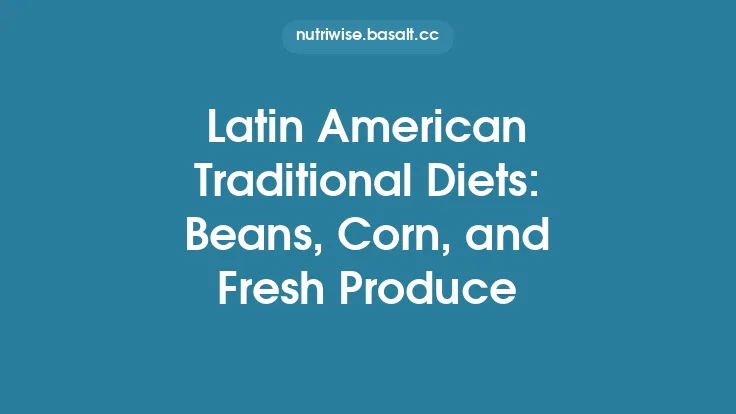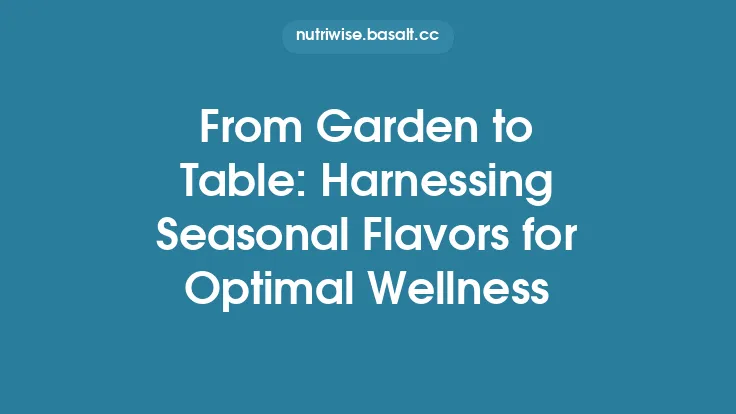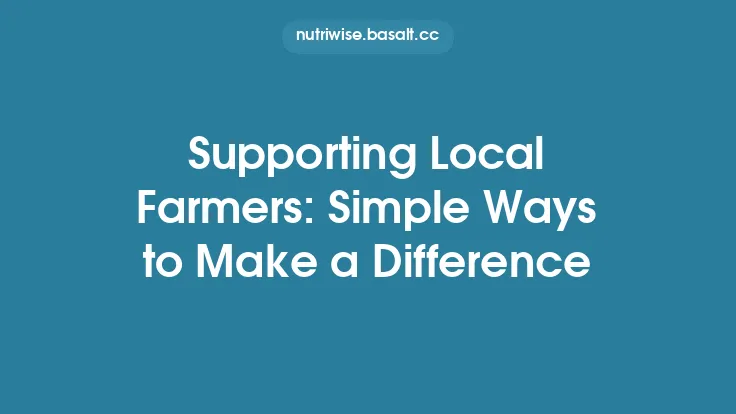The resurgence of heritage and heirloom crop varieties is more than a culinary trend; it is a strategic response to the erosion of genetic diversity in modern agriculture. Over the past century, the global food system has gravitated toward a narrow set of high‑yielding cultivars, driven by market demands, mechanization, and the efficiencies of large‑scale seed production. While these modern varieties have contributed to food security, they have also led to the loss of countless alleles that confer resilience to pests, diseases, climate extremes, and soil conditions. By deliberately incorporating heritage and heirloom varieties into contemporary food production and consumption, growers, seed custodians, and consumers can rebuild a more robust genetic reservoir, ensuring that crops remain adaptable to a changing world.
Defining Heritage and Heirloom Varieties
Heritage varieties are cultivars that have been maintained within a specific region or cultural tradition for multiple generations, often predating the Green Revolution. Heirloom varieties, a term popularized in the United States during the late 20th century, refer to open‑pollinated cultivars that have been passed down through at least three generations of seed saving, typically without the influence of modern breeding programs. Both categories share key characteristics:
- Open‑Pollination: Seeds produced by these plants are true‑to‑type, meaning that the offspring retain the parent’s traits when saved and replanted.
- Genetic Heterogeneity: Unlike many modern hybrids, heirloom and heritage lines often exhibit a broader genetic base, providing a mosaic of traits within a single cultivar.
- Cultural Significance: Many of these varieties are tied to specific culinary practices, festivals, or regional identities, embedding them within the social fabric of communities.
Understanding these definitions is essential for distinguishing genuine heirloom material from recent “retro” varieties that may be marketed under the same label but lack a documented lineage.
The Genetic Value of Heritage Crops
1. Allelic Diversity and Adaptive Traits
Heritage varieties harbor alleles that have been naturally selected for local environmental pressures. For example, a traditional landrace of wheat from the Ethiopian highlands possesses genes conferring tolerance to low‑temperature stress and soil acidity, traits that are absent in many modern, high‑yielding wheat cultivars. Similarly, an heirloom tomato from the Andean region may carry resistance to the bacterial wilt pathogen *Ralstonia solanacearum*, a disease that devastates commercial tomato production worldwide.
2. Polygenic Resilience
Modern breeding often focuses on a few major genes that deliver high yields or specific market traits (e.g., uniform fruit size). In contrast, heritage varieties typically rely on polygenic networks—multiple genes each contributing modestly to overall fitness. This distributed genetic architecture can buffer crops against emerging threats, as the loss of a single gene does not cripple the plant’s overall performance.
3. Nutrient Profile Variability
Research has shown that many heirloom fruits and vegetables contain higher concentrations of phytonutrients, such as anthocyanins in purple carrots or flavonoids in heirloom beans. While not the primary driver of biodiversity preservation, these nutritional differences underscore the broader genetic variability present in heritage germplasm.
Seed Saving as a Conservation Tool
Community Seed Banks
Local seed banks serve as repositories for heritage varieties, preserving them ex situ while also facilitating in situ cultivation. By cataloguing accession data—origin, farmer name, phenotypic description, and storage conditions—seed banks create a living archive that can be accessed by growers seeking to reintroduce diverse cultivars into their fields.
On‑Farm Conservation
Farmers who practice seed saving maintain a dynamic evolutionary process. Each planting season introduces subtle genetic shifts driven by local microclimates, soil microbiomes, and farmer selection criteria (e.g., flavor, disease tolerance). This ongoing adaptation ensures that the varieties remain relevant to their specific growing conditions, a process often referred to as “farmer‑led evolution.”
Technical Protocols for Viable Seed Storage
- Moisture Content: Seeds should be dried to a moisture level of 5–8% before storage to prevent fungal growth.
- Temperature: Optimal long‑term storage occurs at 0–5 °C for most temperate crops; however, some tropical legumes benefit from slightly higher temperatures (10–15 °C) to avoid chilling injury.
- Packaging: Hermetically sealed, opaque containers (e.g., Mylar bags with oxygen absorbers) protect seeds from light, humidity, and oxidative degradation.
- Viability Testing: Periodic germination tests (every 2–3 years) help assess seed vigor, allowing for timely regeneration cycles.
Agronomic Practices that Support Heritage Varieties
1. Mixed‑Crop Systems
Integrating heritage varieties into polyculture arrangements—such as intercropping heirloom beans with traditional corn—can exploit complementary root architectures and nutrient uptake patterns. This not only enhances overall system productivity but also reduces the reliance on external inputs, aligning with sustainable farming principles.
2. Low‑Input Management
Many heirloom cultivars were originally selected under low‑input conditions, making them well‑suited to organic or regenerative agriculture. For instance, a heritage barley variety may exhibit superior nitrogen‑use efficiency, thriving on modest organic amendments where modern high‑demand cultivars would falter.
3. Tailored Pest Management
Because heritage varieties often possess innate pest resistance, growers can adopt targeted, reduced‑pesticide strategies. Monitoring for specific pest pressures and leveraging the plant’s genetic defenses (e.g., leaf trichomes, secondary metabolites) can minimize chemical interventions while maintaining crop health.
Market Dynamics and Consumer Engagement
Value‑Added Labeling
Clear labeling that distinguishes true heirloom varieties—through certification schemes or QR codes linking to provenance data—helps consumers make informed choices. This transparency builds trust and incentivizes growers to maintain authentic heritage lines.
Culinary Innovation
Chefs and food entrepreneurs play a pivotal role in creating demand for heritage produce. By showcasing the unique flavors, textures, and visual appeal of heirloom crops in high‑visibility venues (farm‑to‑table restaurants, food festivals), they generate market pull that encourages farmers to allocate acreage to these varieties.
Economic Viability
While heritage seeds may command higher prices due to their rarity and perceived quality, economies of scale can be achieved through cooperative marketing, shared processing facilities, and direct‑to‑consumer sales channels (e.g., community‑supported agriculture (CSA) programs). These models reduce distribution costs and improve profitability for small‑scale producers.
Policy Frameworks that Enable Biodiversity Conservation
1. Seed Sovereignty Legislation
Policies that protect farmers’ rights to save, exchange, and sell seeds without undue restriction are essential for the continuity of heirloom varieties. Legal recognition of “farmers’ varieties” within national seed laws can prevent the monopolization of seed markets by large corporations.
2. Public Funding for Conservation Breeding
Government grants and research subsidies directed toward the evaluation and improvement of heritage germplasm can accelerate the integration of these varieties into mainstream agriculture. Funding for participatory breeding programs—where scientists collaborate with farmers—ensures that improvements align with local needs and preserve genetic integrity.
3. Inclusion in National Biodiversity Strategies
By explicitly listing heritage crop conservation as a target within national biodiversity action plans, governments can allocate resources for seed bank infrastructure, extension services, and educational outreach, creating a coordinated approach to crop genetic diversity.
Case Studies Illustrating Successful Integration
The Ethiopian Teff Landraces
Teff (*Eragrostis tef*) is a staple grain in Ethiopia, with hundreds of landraces cultivated across diverse agro‑ecological zones. A collaborative project between the Ethiopian Institute of Agricultural Research and local farming cooperatives documented the genetic profiles of these landraces, identified drought‑tolerant alleles, and facilitated their dissemination to smallholder farms. As a result, yields stabilized during periods of erratic rainfall, and the genetic pool of teff remained robust.
Heirloom Sweet Potatoes in the Southern United States
In the southeastern United States, a network of heritage growers has revived over 30 heirloom sweet potato varieties, many of which possess deep orange flesh rich in beta‑carotene. Through community seed exchanges and participation in regional farmers’ markets, these varieties have reentered the food system, providing both nutritional benefits and a buffer against the spread of the sweet potato weevil (*Cylas formicarius*), to which some modern cultivars are highly susceptible.
Ancient Wheat Varieties in the Mediterranean
The “Khorasan” wheat (*Triticum turgidum ssp. turanicum) and “Emmer” wheat (Triticum dicoccum*) have been reintroduced into organic farms across Italy and Greece. Agronomic trials demonstrated that these ancient wheats require less nitrogen fertilizer and exhibit superior performance on marginal soils. Their reintroduction has also spurred niche markets for artisanal breads and pasta, reinforcing the economic case for heritage grain cultivation.
Challenges and Mitigation Strategies
Genetic Erosion Through Commercial Hybridization
When heritage varieties are crossed with modern hybrids without careful selection, valuable alleles can be lost. To mitigate this, breeding programs should employ marker‑assisted selection (MAS) to track and retain target genes from heirloom parents.
Limited Seed Availability
Supply chain bottlenecks can restrict access to authentic heirloom seeds. Establishing regional seed hubs, supported by public‑private partnerships, can improve distribution while maintaining genetic integrity.
Market Perception and Consumer Education
Some consumers associate heirloom produce with higher cost or lower yield. Targeted educational campaigns—highlighting the environmental and nutritional advantages—can shift perceptions and justify premium pricing.
Future Directions for Heritage Crop Conservation
- Digital Genomics Platforms: Open‑access databases that integrate phenotypic data, genomic sequences, and agronomic performance of heritage varieties will enable researchers and growers to make data‑driven decisions about cultivar selection and breeding.
- Climate‑Smart Heirloom Breeding: By combining traditional selection with modern tools such as genomic selection and CRISPR‑based gene editing (used responsibly to retain the open‑pollinated nature of the crop), it is possible to accelerate the development of climate‑resilient heirloom lines without compromising their genetic diversity.
- Urban Agriculture Integration: Rooftop farms, vertical gardens, and community plots can serve as experimental sites for growing heritage varieties, expanding the genetic base of crops cultivated within city environments and fostering public engagement.
- Cross‑Cultural Seed Exchanges: International collaborations that respect intellectual property rights and benefit‑sharing agreements can facilitate the global flow of heirloom germplasm, enriching the collective pool of crop diversity.
Concluding Perspective
Incorporating heritage and heirloom varieties into modern food systems is a multifaceted strategy that safeguards the genetic underpinnings of our crops. By preserving allelic diversity, supporting farmer‑led seed saving, aligning agronomic practices with the strengths of traditional cultivars, and fostering market mechanisms that value these varieties, we create a resilient agricultural landscape capable of withstanding environmental uncertainties. The stewardship of heritage crops is not merely a nostalgic nod to the past; it is an essential investment in the future stability, nutrition, and sustainability of global food production.





